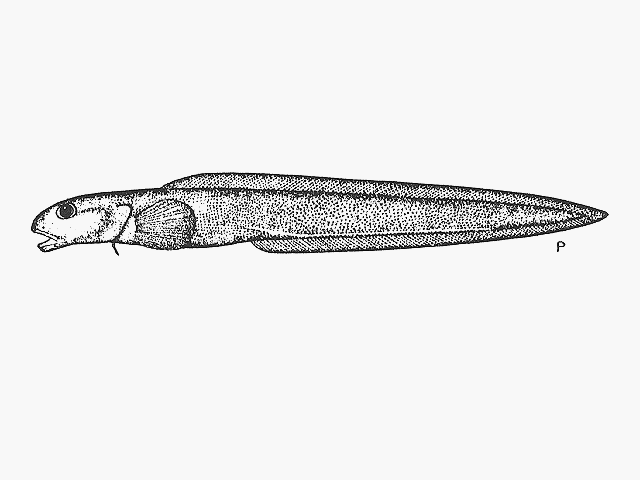| Zoarcidae (Eelpouts), subfamily: Lycodinae |
| 45.2 cm TL (male/unsexed) |
|
bathydemersal; marine; depth range 150 - 2604 m |
| Western Atlantic: Davis Strait, off Newfoundland and Middle Atlantic Bight. Eastern Atlantic: Rockall Trough/ Bill Bailey Bank, off Mauritania and off southwestern Africa. |
|
Dorsal soft rays (total): 15-17. Body uniformly brown with dark fins. Head pores unreduced. Lateral line system with dorsolateral, a mediolateral and a ventral lateral line. Long tail, preanal 33.5-45.9% SL. Body scaled, including neck, fins and abdomen (Ref. 27255). Differs from sympatric species L. vahlii and L. esmarkii by its uniform coloration (vs. bars or marks present), lack of predorsal lateral line, smaller and fewer palatine teeth (3-5 vs. 8-22 and 5-13 respectively) and position of the last precaudal vertebrae in relation to dorsal fin (ray number 15-17 vs.18-19 and 19-20 respectively) (Ref. 36375). |
| Benthic; feeds on sponge remains, worms, molluscs, pycnogonids, crustaceans and brittle stars (Ref. 58426). Species forgotten in CLOFNAM (10007) and FNAM (4695). |
|
Not Evaluated (N.E.) Ref. (130435)
|
| harmless |
Source and more info: www.fishbase.org. For personal, classroom, and other internal use only. Not for publication.

